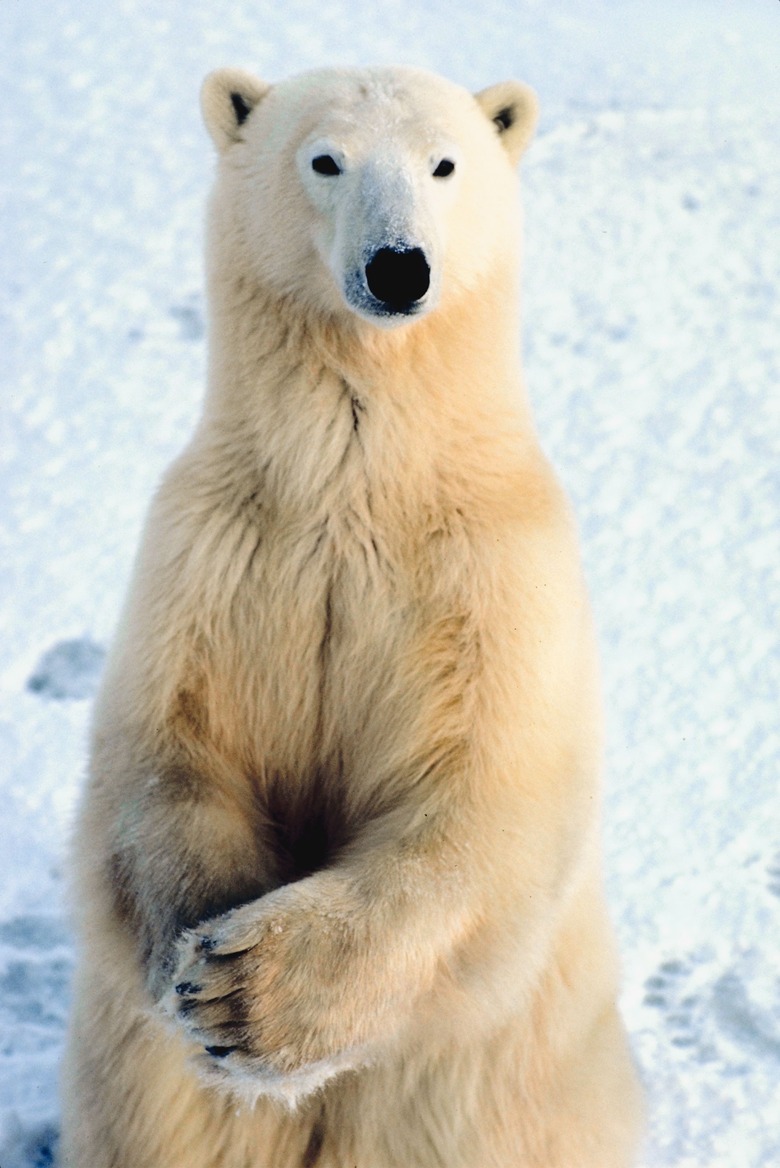Science Experiments For Preschoolers Using Polar Bears And Penguins
Young children learn about the environment through sensory interactions. Science concepts are often overlooked at the preschool level but since this age caters to hands-on learning, it is a great time to introduce science experiments. There are several fun projects that teach children basic concepts about penguins and polar bears.
How Do Polar Bears Stay Warm?
How Do Polar Bears Stay Warm?
Polar bears have a layer of fat under their skin called blubber. This blubber keeps polar bears warm from the Arctic water and air. To demonstrate how fat insulates polar bears by keeping them warm in the icy cold water, have the child stick a hand in a bucket of ice cold water. Next, remove the hand from the cold water and stick the hand into a baggie filled with Crisco. With the hand remaining in the bag of Crisco, stick the hand back into icy water. The water won't feel cold because the Crisco acts as a layer of fat and provides insulation from the extreme temperature.
Do Penguins Get Wet?
Do Penguins Get Wet?
Penguins have a unique oil-producing gland that make the feathers waxy. These waxy feathers repel the cold water found in the South Pole. To teach children how penguins stay dry, color a picture of a penguin with black and white crayons. Pour water over the picture. The water rolls right off the waxy crayon demonstrating how wax repels water.
Are Polar Bears White?
Are Polar Bears White?
The fur on a polar bear is actually clear. Fill two glass jars with black coffee. Cover one with a white cloth and the other with clear plastic. Place both jars in the sun for at least an hour. Check the temperature with a food thermometer. The coffee with the clear plastic will be warmer because the white cloth actually reflects sunlight and heat. The hollow hairs on the polar bear soak up the sunlight and make polar bears appear white. This heat from the sunlight is carried down to the skin. A polar bear's skin is black and soaks up the heat to keep him warm.
What Makes Ice Melt?
What Makes Ice Melt?
To teach children about the habitat of polar bears and penguins, fill a glass with water and a cube of ice. Lay a piece of string across the ice. Sprinkle salt on the ice cube. The salt will melt the ice and create a bond with the string. The child will be able to pick the ice up with the string. This is a great experiment in teaching children about the properties of melting ice.
Cite This Article
MLA
Ramsey, Caryl Cress. "Science Experiments For Preschoolers Using Polar Bears And Penguins" sciencing.com, https://www.sciencing.com/science-experiments-preschoolers-using-polar-bears-penguins-12103382/. 24 April 2017.
APA
Ramsey, Caryl Cress. (2017, April 24). Science Experiments For Preschoolers Using Polar Bears And Penguins. sciencing.com. Retrieved from https://www.sciencing.com/science-experiments-preschoolers-using-polar-bears-penguins-12103382/
Chicago
Ramsey, Caryl Cress. Science Experiments For Preschoolers Using Polar Bears And Penguins last modified August 30, 2022. https://www.sciencing.com/science-experiments-preschoolers-using-polar-bears-penguins-12103382/
